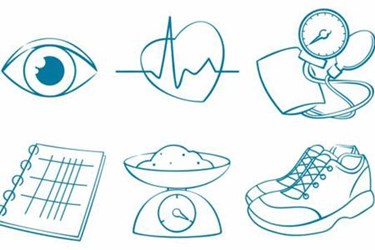JDRF Hopes Technology Will Solve Patient Recruitment Challenge

By Ed Miseta, Chief Editor, Clinical Leader

Derek Rapp, the president and CEO of JDRF, the leading global organization funding type 1 diabetes (T1D) research, is familiar with the challenges patients face when trying to find a trial. He has one son who was diagnosed with the disease almost 12 years ago and a second son who has spent years participating in a clinical trial, as he has multiple antibodies (a precursor to the disease) and is at risk of contracting it, as well.
Rapp also cites statistics noting 80 percent of all trials are delayed due to recruitment issues. Over the next decade he expects the number of trials to increase. The primary mission of JDRF is to accelerate therapies reaching the marketplace that will help patients living with diabetes and to ultimately find a cure. Therefore, anything the organization can do to speed up trials is time well spent and a win for the group and its members.
“That 80 percent figure is very troubling to me,” says Rapp. “Recruitment is always a challenge, but the T1D community is a passionate one. Having personally met many of these individuals, I know they want to participate in clinical trials. But they often do not know how to do so. Unfortunately, until now, the tools that existed for getting patients into trials were not easy for most people to access or use. We desperately needed a tool to make it easy for patients to find and enroll in a trial.”
Connect Patients To Trials
In July, JDRF and TrialReach, a health technology startup, announced a new clinical trial matching tool that would make it easier for patients to find and participate in diabetes research. Patients living with T1D will now be able to go to the JDRF website and, using Clinical Trials Connection powered by TrialReach Match, answer a few questions and be quickly and easily matched to a clinical trial. The goal for this free tool is to accelerate the development of new treatments and cures by increasing the number of people taking part in T1D research.
 Part of the recruitment challenge is that physicians treating patients do not adequately inform them of available trials. “Our experience has been that unless physicians are participants in clinical trials, most simply do not suggest trials to patients,” says Rapp. “I’ve heard many reasons why that might be, ranging from not being aware of the trials, to the fear of losing patients, to simply not being trained on how to make the referrals. Whatever the reason, the fact is that referrals are not happening. Luckily, in an impassioned community like the one we have with T1D, people are now able to empower themselves. Clinical Trials Connection now enables them to find a trial on their own.”
Part of the recruitment challenge is that physicians treating patients do not adequately inform them of available trials. “Our experience has been that unless physicians are participants in clinical trials, most simply do not suggest trials to patients,” says Rapp. “I’ve heard many reasons why that might be, ranging from not being aware of the trials, to the fear of losing patients, to simply not being trained on how to make the referrals. Whatever the reason, the fact is that referrals are not happening. Luckily, in an impassioned community like the one we have with T1D, people are now able to empower themselves. Clinical Trials Connection now enables them to find a trial on their own.”
Social media in general is helping to advance recruitment efforts, and Rapp notes the T1D online community is both strong and active. Experiences, both good and bad, are shared so everyone is aware of what members of the community are experiencing.
“I am not critical of physicians,” says Rapp. “They have a lot of things to think about and educating patients on trials may not be at the top of their list. They are primarily focused on helping people with the therapies that are available today. Of course, that makes it incumbent on the rest of us in the industry to make it as easy as possible for patients to find and get educated on trials.”
In discussing the Clinical Trials Connection, Rapp is clearly most impressed by how easy it is for patients to use. He notes patients need only access the site and answer a handful of questions to be provided with a list of available trials in their area for which they may be a qualified candidate. It is intuitive and easy to navigate. He notes there are no ads for users to grapple with, and even the graphics are simple and easy to understand. I personally went to the website, answered three questions, and was provided with a link to a trial within five miles of my home. Clicking on the trial will take users to a page where they can start the qualification and enrollment process.
Make It Easy To Use
Since the tool was announced in July, it has been picked up by the media, shared by the diabetes online community, and promoted via the JDRF website. “Currently we have a few hundred people per day accessing the site,” states Rapp. “On our most active day, nearly 4,000 individuals accessed the site and used the tool.”
Although information on diabetes trials can also be obtained on other sites, such as ClinicalTrials.gov, Rapp believed a simpler, easier to use tool was needed. Rapp notes ClinicalTrials.gov has been in existence for years, and yet JDRF still heard from patients that they did not know how to use it to access a list of trials. That, for him, was the strongest evidence that a new solution was needed. He believes the greatest features of the site are its simplicity and the fact that it is not intimidating to users.
Rapp notes the tool is no cost to users and also no cost to JDRF. TrialReach generates revenue through a premium service that is separate from this program.
“My younger son is now 19 and has been in a clinical trial for more than 6 years,” adds Rapp. “He has found his participation in that trial to be tedious at times, but empowering as well. Every patient will have a different experience, but most are glad to have the chance to help themselves and others. Participation is important to these patients, and we need to do our part to make that experience as easy on them as possible. Any way that we can empower patients will enable them to make a difference for themselves and others with the disease.”
